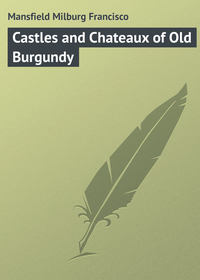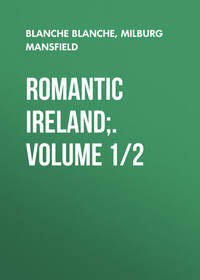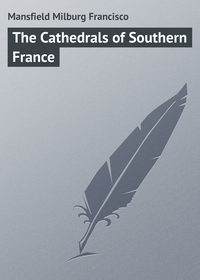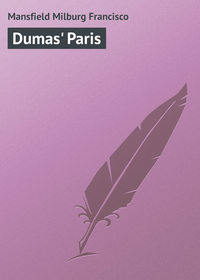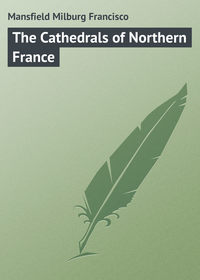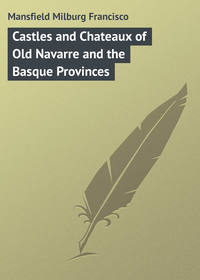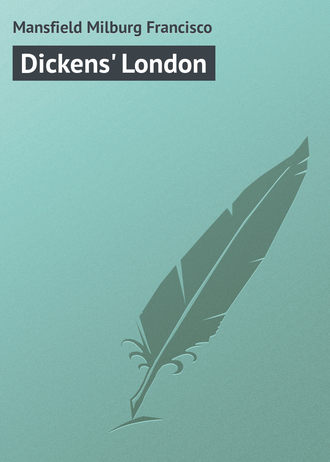 полная версия
полная версияDickens' London
Dickens' first tour to America followed the abandonment of the periodical in 1842. This event called forth the following verses by Tom Hood, entitled:
TO CHARLES DICKENSOn his Proposed Voyage to America, 1842"Pshaw! away with leaf and berryAnd the sober-sided cup!Bring a Goblet and bright Sherry!And a bumper fill me up. —Tho' I had a pledge to shiver,And the longest ever was, —Ere his vessel leaves our river,I will drink a health to 'Boz.'"Here's success to all his antics,Since it pleases him to roam,And to paddle o'er Atlantics,After such a sale at homeMay he shun all rocks whatever,And the shallow sand that lurks, —And his passage be as cleverAs the best among his works."With what favour his visit was received in America is too well known to require detailed mention here. His experiences and observations recounted in "American Notes," first published in 1842 upon his return to England, has told these vividly and picturesquely, if not exactly consistently.
As a reader, Dickens stood as preëminently to the fore as when posing as a writer. His phenomenal success on the platform is given in detail in a volume written by George Dolby, who accompanied him and managed his American tour. The mental and physical strain was such that in fifteen years of combined editorial, literary, and reading labours, it left him attenuated and finally curtailed his brilliant work.
What the readings really did accomplish was to increase and firmly assure the permanence of his already wide-spread fame.
"Martin Chuzzlewit" had begun to appear in shilling parts in 1843, and at that time was considered by the novelist to be by far the best work he had yet written. "Dombey and Son" followed, and afterward "David Copperfield," to which Dickens transferred his affections from "Chuzzlewit." This new "child of fancy," as he called it, was so largely autobiographical as to be accepted by many as being a recounting of his own early struggles as a poor boy in London, and his early literary labours. He himself said: "I seemed to be sending a part of myself into the shadowy world."
While "Chuzzlewit" was appearing in serial form, that masterpiece perhaps of all Dickens' shorter stories, "A Christmas Carol," – the first of the "Christmas Stories," – appeared.
This earned for its author the sobriquet, "The Apostle of Christmas."
Its immediate popularity and success was, perhaps, influenced by the following endorsement from Thackeray:
"It seems to me a national benefit, and to every man or woman who reads it a personal kindness."
Others under the same generic title followed: "The Chimes," 1844; "The Cricket on the Hearth," 1845; "The Battle of Life," 1846; and "The Haunted Man," 1848. In January, 1846, Dickens began his short connection with the Daily News. Here his "Pictures from Italy" appeared, he having just returned from a journey thither.
"Dombey and Son," which Dickens had begun at Rosemont, Lausanne, took him from 1846 to 1848 to complete.
In 1850 the idea of Household Words, the periodical with which Dickens' fame is best remembered, took shape. His idea was for a low-priced periodical, to be partly original, and in part selected. "I want to suppose," he wrote, "a certain shadow which may go into any place by starlight, moonlight, sunlight, or candle-light, and be in all homes and all nooks and corners." The general outlines and plans were settled, but there appears to have been no end of difficulty in choosing a suitable name. "The Highway of Life," "The Holly Tree," "The Household Voice," "The Household Guest," and many others were thought of, and finally was hit upon "Household Words," the first number of which appeared on March 30, 1850, with the opening chapters of a serial by Mrs. Gaskell, whose work Dickens greatly admired. In number two appeared Dickens' own pathetic story, "The Child's Dream of a Star." In 1859, as originally conceived, Household Words was discontinued, from no want of success, but as an expediency brought about through disagreement among the various proprietors. Dickens bought the property in, and started afresh under the title of All the Year Round, among whose contributors were Edmund Yates, Percy Fitzgerald, Charles Lever, Wilkie Collins, Charles Reade, and Lord Lytton. This paper in turn came to its finish, and phœnix-like took shape again as Household Words, which in one form or another has endured to the present day, its present editor (1903) being Hall Caine, Jr., a son of the novelist.
Apart from the general circulation, the special Christmas numbers had an enormous sale. In these appeared other of the shorter pieces which have since become famous, – "Mugby Junction," "The Seven Poor Travellers," "The Haunted House," etc.
In the pages of Household Words "The Child's History of England," "The Uncommercial Traveller" (1861), and "Hard Times" (1854) first appeared; while All the Year Round first presented "A Tale of Two Cities" (1859) and "Great Expectations."
"Bleak House" was issued in parts in 1852. "Little Dorrit," originally intended to be called "Nobody's Fault," was published in 1857.
"Our Mutual Friend" dates from 1865 in book form. "Edwin Drood" was left unfinished at the author's death in 1870.
In 1868 "The Uncommercial Traveller" was elaborated for the first issue in All the Year Round, and subsequently again given to the world in revised book form.
Curiously enough, though most of Dickens' works were uncompleted before they began to appear serially, they have been universally considered to show absolutely no lack of continuity, or the least semblance of being in any way disjointed.
Dickens' second visit to America in 1867 was, like its predecessor, a stupendous success. A New York paper stated at this time that: "Of the millions here who treasure every word he has written, there are tens of thousands who would make a large sacrifice to see and hear a man who has made so many happy hours."
Dickens' fame had deservedly attracted a large circle of acquaintances around him, who, in truth, became firmly converted into fast friends.
His literary life and his daily labours had so identified him with the literary London of the day that all reference to literary events of that time must make due allowance of his movements.
The house at 48 Doughty Street still stands, and at the end of 1839 the novelist removed to the "handsome house with a considerable garden" in Devonshire Terrace, near Regent's Park, the subject of a sketch by Maclise which is here given. His holidays during his early and busy years were spent at Broadstairs, Twickenham, and Petersham on the Thames, just above Richmond. Dickens was always a great traveller, and his journeys often took him far afield.
In 1841 he visited Landor at Bath, and in the same year he made an excursion to Scotland and was granted the freedom of the city of Edinburgh. The first visit to America was undertaken in 1842; his Italian travels in 1844; residence in Switzerland 1846; three months in Paris 1847; Switzerland and Italy revisited in 1853. Three summers were spent at Boulogne in 1853, 1854, 1856; residence in Paris 1855-56; America revisited 1867-68.
Such in brief is a review of the physical activities of the author. He did not go to Australia – as he was variously importuned – but enough is given to show that, in spite of his literary associations with old London and its institutions, Charles Dickens was, for a fact, a very cosmopolitan observer.
As for Dickens' daily round of London life, it is best represented by the period of the magazines, Master Humphrey's Clock, Household Words, and All the Year Round, particularly that of the former. In those days he first met with the severe strain which in after life proved, no doubt, to have shortened his days.
Considering his abilities and his early vogue, Dickens made some astonishingly bad blunders in connection with his agreements with publishers; of these his biographer Forster tells in detail.
After the publication of "Martin Chuzzlewit," Dickens expressed dissatisfaction with his publishers, Messrs. Chapman and Hall, which resulted in his making an agreement with Messrs. Bradbury and Evans.
To conserve his intellectual resources, he resolved to again visit Italy, to which country he repaired after a farewell dinner given him at Greenwich, where Turner, the artist, and many other notables attended. He accordingly settled in a suburb of Genoa, where he wrote "The Chimes," and came back to London especially to read it to his friends. Writing from Genoa to Forster in November, 1844, he said:
"… But the party for the night following? I know you have consented to the party. Let me see. Don't have any one this particular night for dinner, but let it be a summons for the special purpose, at half-past six. Carlyle indispensable, and I should like his wife of all things; her judgment would be invaluable. You will ask Mac, and why not his sister? Stanny and Jerrold I should particularly wish; Edwin Landseer, Blanchard … and when I meet you, oh! Heaven, what a week we will have!"
Forster further describes the occasion itself as being —
"Rather memorable … the germ of those readings to larger audiences by which, as much as by his books, the world knew him."
Among those present was Maclise, who, says Forster, "made a note of it" in pencil, which is reproduced herein. "It will tell the reader all he can wish to know, and he will thus see of whom the party consisted."
Of Dickens' entire literary career nothing was more successful than his famous public readings. From that night at Forster's house in Lincoln's Inn Fields (No. 58, still standing, 1903), afterward made use of as Mr. Tulkinghorn's in "Bleak House," and later among other friends, at first in a purely informal and private manner and in a semi-public way for charitable objects, these diversions, so powerful and realistic were they, ultimately grew into an out-and-out recognized business enterprise.
The first series was inaugurated in 1858-59, and absolutely took the country by storm, meeting with the greatest personal affection and respect wherever he went. In Dublin there was almost a riot. People broke the pay-box, and freely offered £5 for a stall. In Belfast he had enormous audiences, being compelled, he said, to turn half the town away. The reading over, the people ran after him to look at him. "Do me the honour," said one, "to shake hands, Misther Dickens, and God bless you, sir; not ounly for the light you've been to me this night, but for the light you've been to me house, sir (and God bless your face!), this many a year." Men cried undisguisedly.
During the second American tour, in 1867, the public went almost mad. In Boston his reception was beyond all expectations; and in New York the speculators assembled the night before the reading in long lines to wait the opening of the doors at nine the next morning for the issue of the tickets. They continued to come all night, and at five o'clock in the morning there were two lines of eight hundred each, whilst at eight there were five thousand. At nine o'clock, each of the two lines reached more than three-quarters of a mile in length, members of the families were relieving each other, waiters from neighbouring restaurants were serving breakfasts in the open December air, and excited applicants for tickets offering five or ten dollars for the mere permission to exchange places with other persons standing nearer the head of the line. Excitement and enthusiasm increased wherever he travelled, and it has been freely observed by all who knew him well that this excitement and strain finally culminated, after he had returned to England and undertaken there another series of readings, in an illness which hastened his death.
THE HIGHWAY OF LETTERS
In Dickens' time, as in our own, and even at as early a period as that of Drayton, Fleet Street, as it has latterly been known, has been the abode of letters and of literary labours.
The diarists, journalists, political and religious writers of every party and creed have adopted it as their own particular province. Grub Street no longer exists, so that the simile of Doctor Johnson does not still hold true.
The former Grub Street – "inhabited by writers of small histories, dictionaries, and temporary poems" (vide Doctor Johnson's Dictionary) – has become Milton Street through the mindful regard of some former sponsor, by reason of the nearness of its location to the former Bunhill residence of the great epic poet. But modern Fleet Street exists to-day as the street of journalists and journalism, from the humble penny-a-liner and his product to the more sedate and verbose political paragrapher whose reputation extends throughout the world.
Nowhere else is there a long mile of such an atmosphere, redolent of printers' ink and the bustle attendant upon the production and distribution of the printed word. And nowhere else is the power of the press more potent.
Its historian has described it as "a line of street, with shops and houses on either side, between Temple Bar and Ludgate Hill, one of the largest thoroughfares in London, and one of the most famous."
Its name was derived from the ancient streamlet called the Fleet, more commonly "Fleet Ditch," near whose confluence with the Thames, at Ludgate Hill, was the notorious Fleet Prison, with its equally notorious "marriages."
This reeking abode of mismanagement was pulled down in 1844, when the "Marshalsea," "The Fleet," and the "Queen's Bench" (all three reminiscent of Dickens, likewise Newgate, not far away) were consolidated in a new structure erected elsewhere.
The unsavoury reputation of the old prison of the Fleet, its "chaplains," and its "marriages," are too well-known to readers of contemporary literature to be more than mentioned here.
The memory of the famous persons who were at one time or another confined in this "noisome place with a pestilential atmosphere" are recalled by such names as Bishop Hooper, the martyr; Nash, the poet and satirist; Doctor Donne, Killigrew, the Countess of Dorset, Viscount Falkland, William Prynne, Richard Savage, and – of the greatest possible interest to Americans – William Penn, who lived "within the rules" in 1707.
The two churches lying contiguous to this thoroughfare, St. Dunstan's-in-the-West and St. Bride's, are mentioned elsewhere; also the outlying courts and alleys, such as Falcon, Mitre, and Salisbury Courts, Crane Court, Fetter Lane, Chancery Lane, Whitefriars, Bolt Court, Bell Yard, and Shoe Lane, the Middle and Inner Temples, and Sergeant's Inn.
The great fire of London of 1666 stopped at St. Dunstan's-in-the-West and at the easterly confines of the Temple opposite.
Michael Drayton, the poet, lived at "a baye-windowed house next the east end of St. Dunstan's Church," and Cowley was born "near unto the corner of Chancery Lane."
The "Horn Tavern," near which was Mrs. Salmon's celebrated waxwork exhibition (for which species of entertainment the street had been famous since Elizabeth's time), is now Anderton's Hotel, still a famous house for "pressmen," the name by which the London newspaper writer is known.
A mere mention of the sanctity of letters which surrounded the Fleet Street of a former day, is presumably the excuse for connecting it with the later development of literary affairs, which may be said so far as its modern repute is concerned, to have reached its greatest and most popular height in Dickens' own time.
The chroniclers, the diarists, and the satirists had come and gone. Richardson – the father of the English novel lay buried in St. Bride's, and the innovation of the great dailies had passed the stage of novelty. The Gentleman's Magazine and the Reviews had been established three-quarters of a century before. The Times had just begun to be printed by steam. Each newspaper bore an imprinted government stamp of a penny per copy, – a great source of revenue in that the public paid it, not the newspaper proprietor. (The Times then sold for five pence per copy.) The Illustrated London News, the pioneer of illustrated newspapers, had just come into existence, and Punch under Blanchard Jerrold had just arrived at maturity, so to speak. Such, in a brief way, were the beginnings of the journalism of our day; and Dickens' connection therewith, as Parliamentary reporter of The True Sun and The Morning Chronicle, were the beginnings of his days of assured and adequate income, albeit that it came to him at a comparatively early period of his life. The London journalist of Dickens' day was different in degree only from the present. The True Sun, for which Dickens essayed his first reportorial work, and later The Morning Chronicle, were both influential journals, and circulated between them perhaps forty thousand copies, each bearing a penny stamp impressed on the margin, as was the law.
The newspapers of London, as well as of most great cities, had a localized habitation, yclept Newspaper Row or Printing-House Square, and other similar appellations. In London the majority of them were, and are, printed east of Temple Bar, in, or south of, Fleet Street, between Waterloo and Blackfriars Bridges. To borrow Johnson's phrase, this is the mart "whose staple is news."
The Times– "The Thunderer" of old – was housed in a collection of buildings which surrounded Printing-House Square, just east of Blackfriars Bridge. In 1840 The Times had, or was understood to have, three editors, fifteen reporters, with a more or less uncertain and fluctuating number of correspondents, news collectors, and occasional contributors. These by courtesy were commonly referred to as the intellectual workers. For the rest, compositors, pressmen, mechanics, clerks, et al., were of a class distinct in themselves. The perfecting press had just come into practical use, and though the process must appear laboriously slow to-day when only 2,500 perfected copies of a four-page paper were turned out in an hour, The Times was in its day at the head of the list as to organization, equipment, and influence.
The other morning and evening papers, The Post, The Advertiser, The Globe, The Standard, The Morning Chronicle, and The Sun, all had similar establishments though on a smaller scale.
But two exclusively literary papers were issued in 1840 —The Literary Gazette and The Athenæum, the latter being to-day the almost universal mentor and guide for the old-school lover of literature throughout the world. The Spectator was the most vigorous of the weekly political and social papers, now sadly degenerated, and Bell's Life in London, which had printed some of Dickens' earlier work, was the only nominal "sporting paper." Church papers, trade papers, society papers, and generally informative journals were born, issued for a time, then died in those days as in the present.
Punch was, and is, the most thoroughly representative British humourous journal, and since its birth in the forties has been domiciled in Bouverie Street, just off the main thoroughfare of Fleet Street.
The literary production in this vast workshop in point of bulk alone is almost beyond comprehension. In 1869, a year before Dickens' death, there were published in London alone three hundred and seventy-two magazines and serials, seventy-two quarterlies, and two hundred and ninety-eight newspapers etc.
As for the golden days of the "Highway of Letters," they were mostly in the glorious past, but, in a way, they have continued to this day. A brief review of some of the more important names and events connected with this famous street will, perhaps, not be out of place here.
Among the early printers and booksellers were Wynken de Worde, "at ye signe of ye Sonne;" Richard Pynson, the title-pages or colophons of whose works bore the inscription, "emprynted by me Richard Pynson at the temple barre of London (1493);" Rastell, "at the sign of the Star;" Richard Tottel, "within Temple-bar, at the signe of the Hande and Starre," which in Dickens' day had become the shop of a low bookseller by the name of Butterworth, who it was said still held the original leases. Others who printed and published in the vicinity were W. Copeland, "at the signe of the Rose Garland;" Bernard Lintot, "at the Cross Keys;" Edmund Curll, "at the Dial and Bible," and Lawton Gulliver, "at Homer's Head," against St. Dunstan's Church; and Jacob Robinson, on the west side of the gateway "leading down the Inner Temple Lane," an establishment which Dickens must have known as Groom's, the confectioner's. Here Pope and Warburton first met, and cultivated an acquaintanceship which afterward developed into as devoted a friendship as ever existed between man and man. The fruit of this was the publication (in 1739) of a pamphlet which bore the title, "A Vindication of Mr. Pope's 'Essay on Man,' by the Author of 'The Divine Legation of Moses,' printed for J. Robinson."
At Collins' shop, "at the Black Boy in Fleet Street," was published the first "Peerage," while other names equally famous were the publishers, T. White, H. Lowndes, and John Murray.
Another trade which was firmly established here was the bankers, "Child's," at Temple Bar, being the oldest existing banking-house in London to-day. Here Richard Blanchard and Francis Child, "at the Marygold in Fleet Street," – who were goldsmiths with "running cashes," – were first established in the reign of Charles II. "In the hands of Mr. Blanchard, goldsmith, next door to Temple Bar," Dryden deposited his £50 received for the discovery of the "bullies" by whom Lord Rochester had been barbarously assaulted in Covent Garden.
Another distinctive feature of Fleet Street was the taverns and coffee-houses. "The Devil," "The King's Head," at the corner of Chancery Lane, "The Bolt-in-Tun," "The Horn Tavern," "The Mitre," "The Cock," and "The Rainbow," with "Dick's," "Nando's," and "Peele's," at the corner of Fetter Lane – its descendant still existing, – completes the list of the most famous of these houses of entertainment.
To go back to a still earlier time, to connect therewith perhaps the most famous name of English literature, bar Shakespeare, it is recorded that Chaucer "once beat a Franciscan friar in Fleet Street," and was fined two shillings for the privilege by the Honourable Society of the Inner Temple. As the chroniclers have it: "So Speght heard from Master Barkly, who had seen the entry in the records of the Inner Temple."
A rather gruesome anecdote is recounted by Hughson in his "Walks through London" (1817), concerning Flower-de-Luce Court (Fleur-de-Lis Court), just off Fetter Lane in Fleet Street. This concerned the notorious Mrs. Brownrigg, who was executed in 1767 for the murder of Mary Clifford, her apprentice. "The grating from which the cries of the poor child issued" being still existent at the time when Hughson wrote and presumably for some time after. Canning, in imitation of Southey, recounts it thus in verse:
"… Dost thou ask her crime?She whipp'd two female 'prentices to death,And hid them in the coal-hole. For this actDid Brownrigg swing. Harsh laws! But time shall come,When France shall reign and laws be all repeal'd."Which gladsome (?) day has fortunately not yet come.
No résumé of the attractions of Fleet Street can well be made without some mention of Whitefriars, that region comprehended between the boundaries of the Temple on one side, and where once was the Fleet Ditch on the other. Its present day association with letters mostly has to do with journalism, Carmelite Street, Whitefriars Street, and other lanes and alleys of the immediate neighbourhood being given over to the production of the great daily and weekly output of printed sheets. This ancient precinct formerly contained the old church of the White Friars, a community known in full as Fratres Beatæ Mariæ de Mont Carmeli.
Founded by Sir Richard Grey in 1241, the church was surrendered at the Reformation, and the Hall was made into the first Whitefriars Theatre, and the precinct newly named Alsatia, celebrated in modern literature by Scott in the "Fortunes of Nigel." "The George Tavern," mentioned in Shadwell's play, "The Squire of Alsatia," became later the printing shop of one Bowyer, and still more recently the printing establishment of Messrs. Bradbury and Evans, the publishers and proprietors of Punch, which building was still more recently removed for the present commodious structure occupied by this firm. In Dickens' time it was in part at least the old "George Tavern." It is singular perhaps that Dickens' connection with the famous "Round Table" of Punch was not more intimate than it was. It is not known that a single article of his was ever printed in its pages, though it is to be presumed he contributed several, and one at least is definitely acknowledged.




